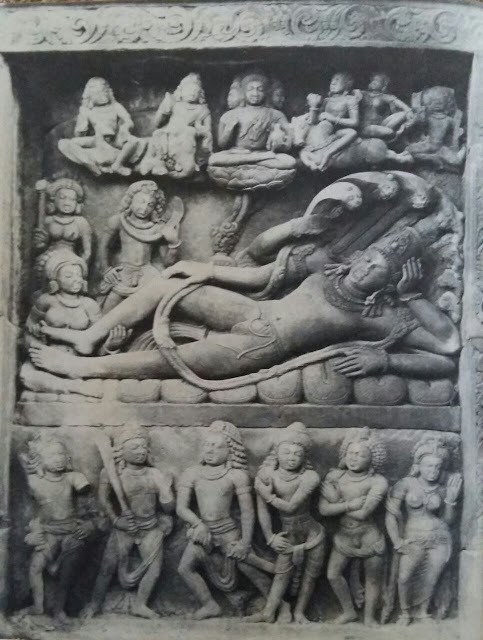Flying Gandharva and Apsara
Lord Indra ' s palace is full of Gandharvas and Apsaras. They are the musicians and the dancers of his court. They are the Hindu counterpart of Christian angles. Like the angels they are divine beings who are closer to the gods than mortals. Man is said to be between the angels and the beast. It is up to us to ascend the ladder and become angels, or to descend the ladder and become the beast.
Chalukyan art had a great influence both on Indian and Chinese Art. These flying figures became the proto - type for divine beings both in Hindu art and in Buddhist art of China and Japan. Globalisation of Asian art began from India.

























